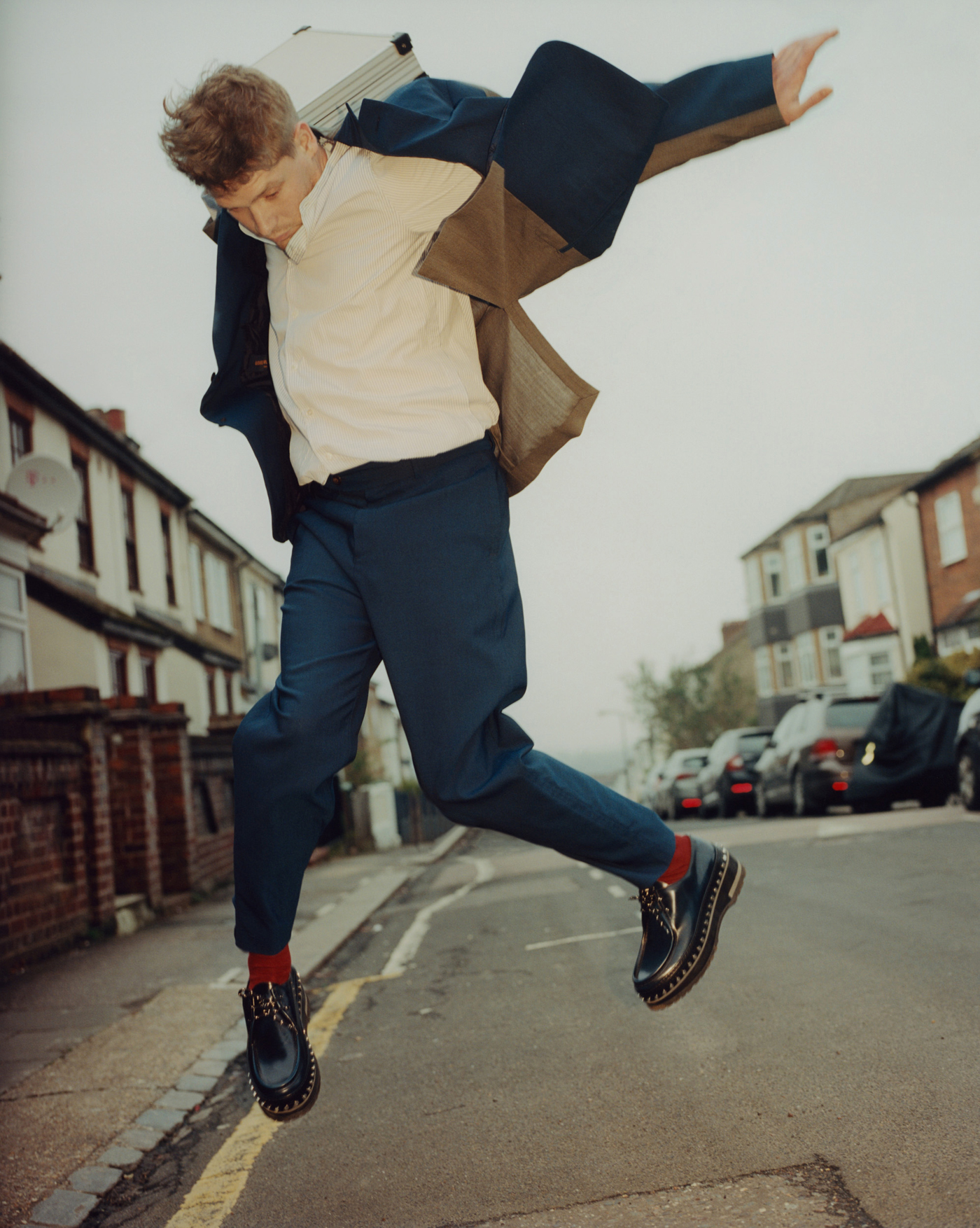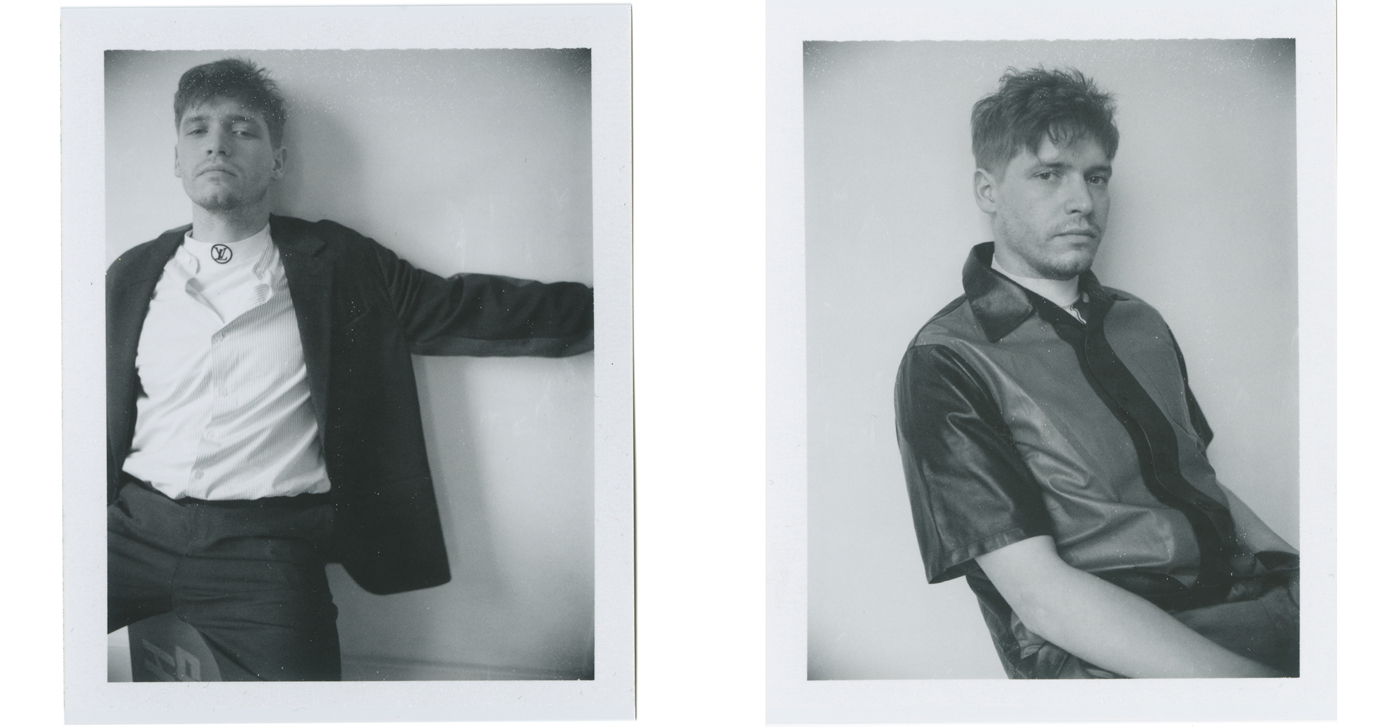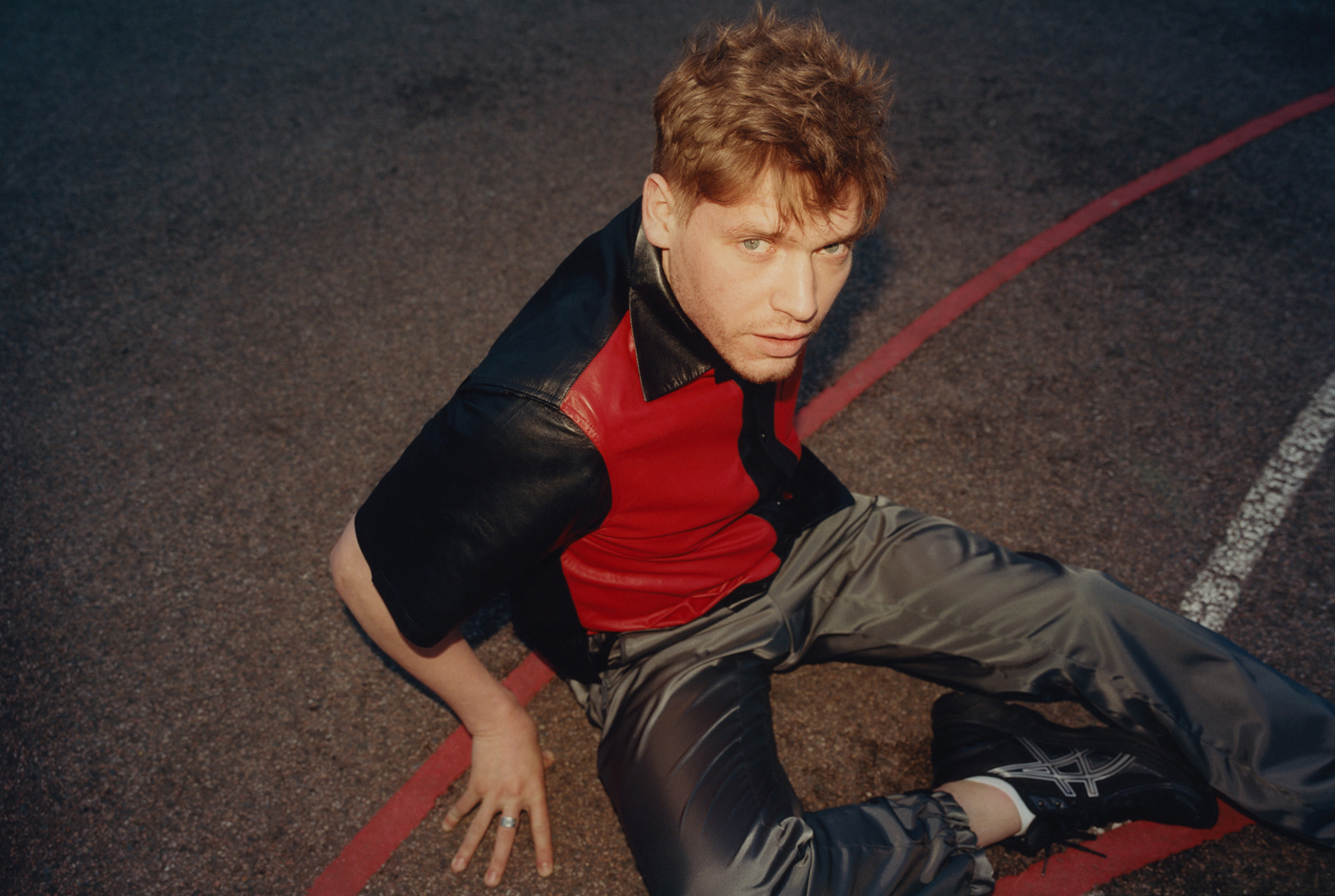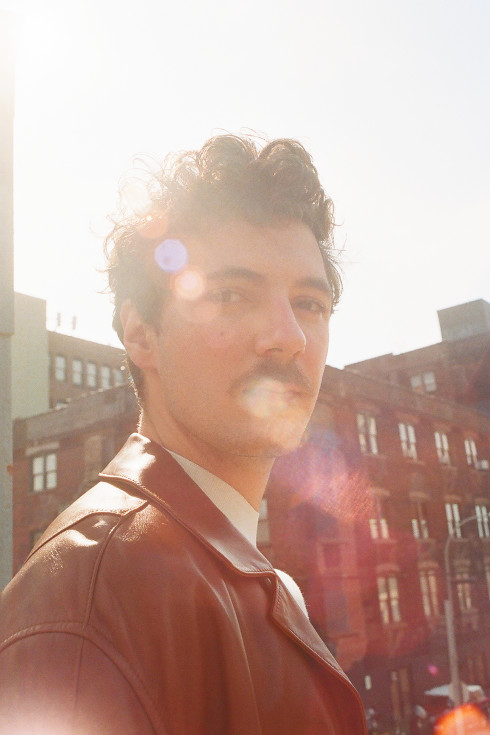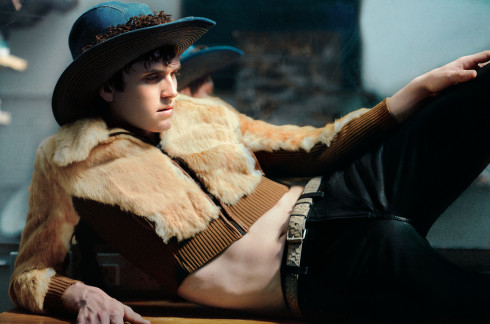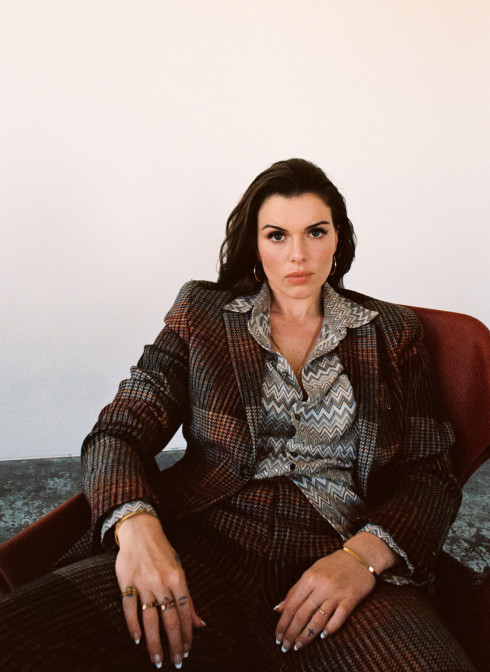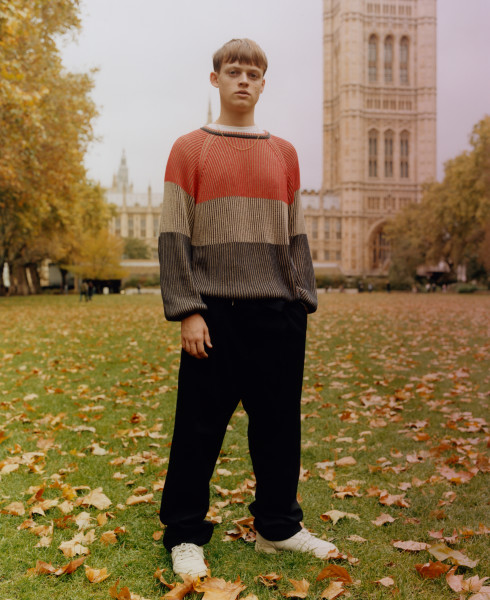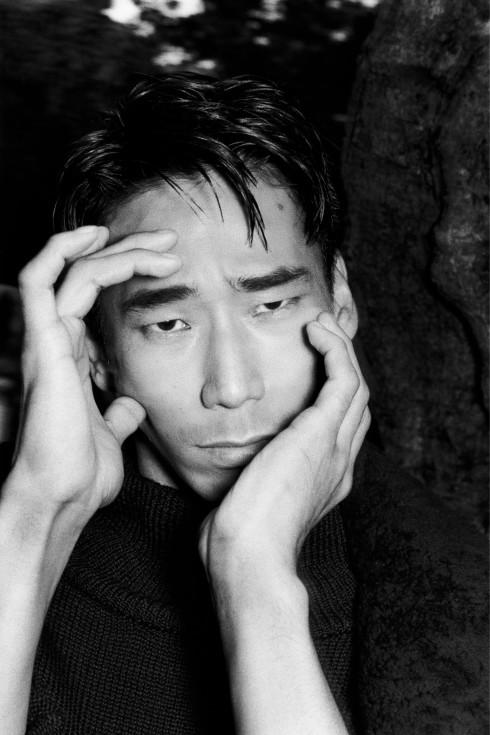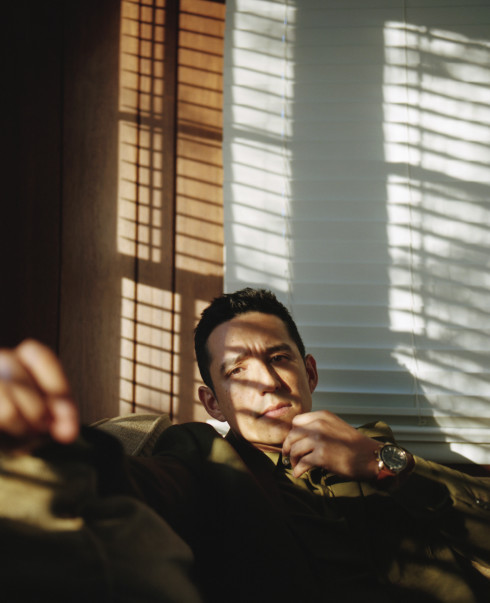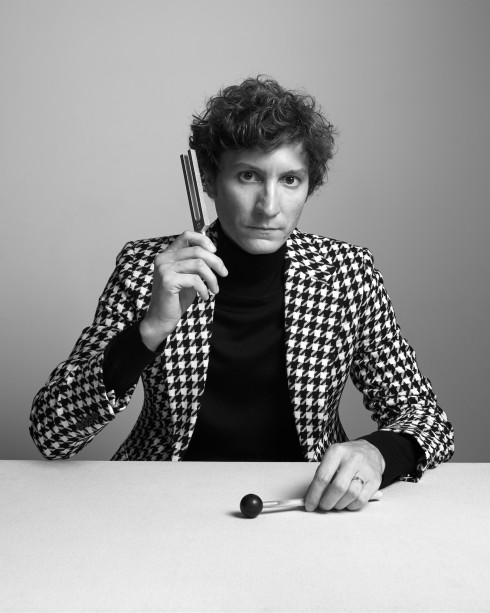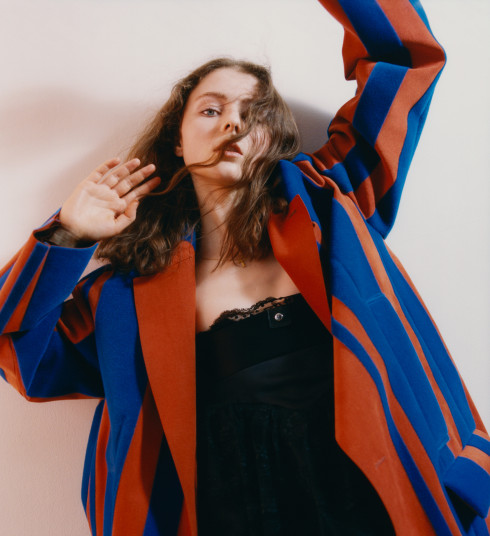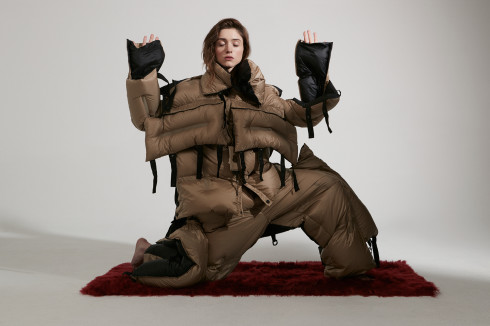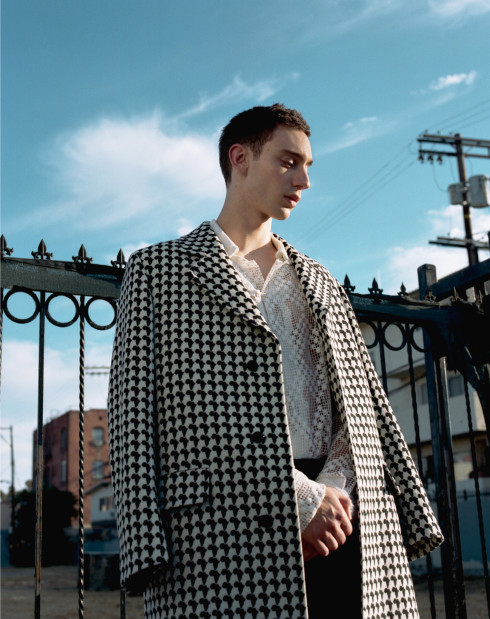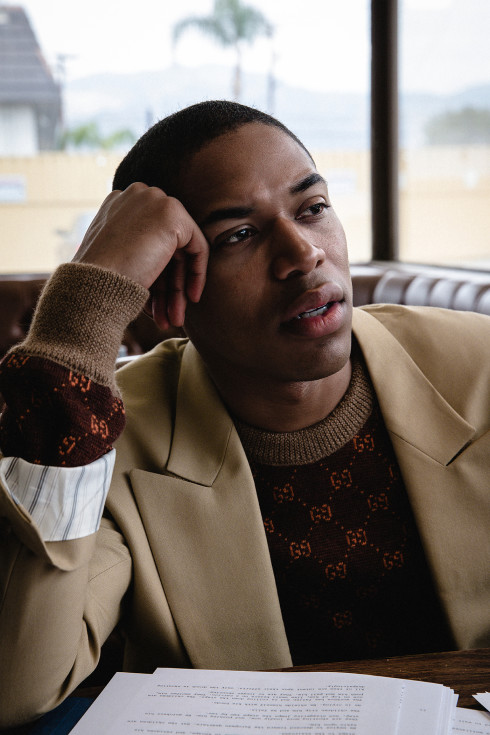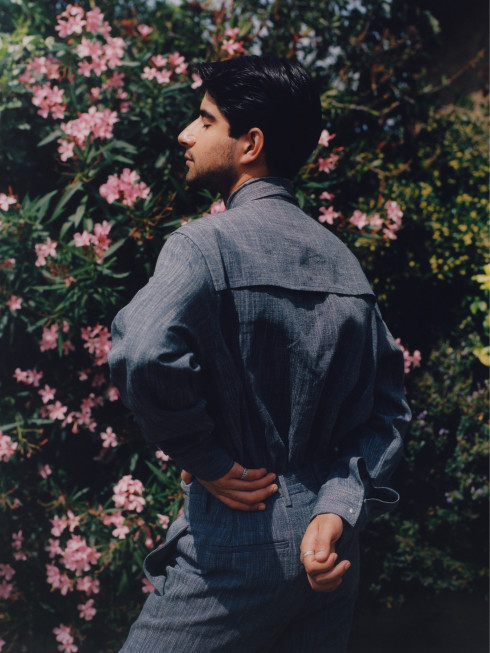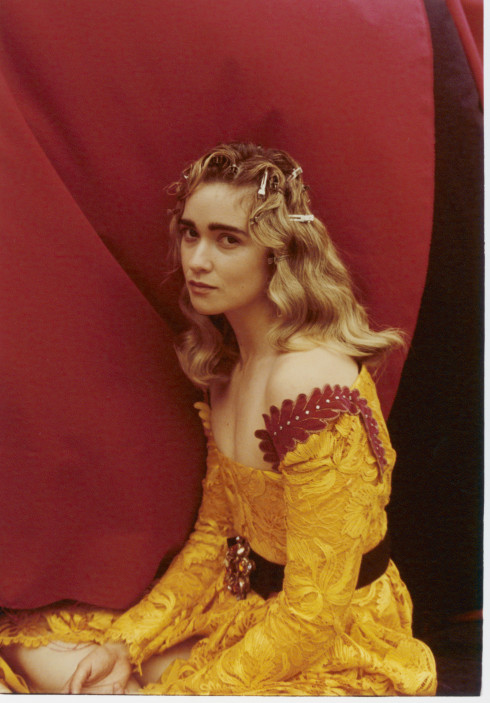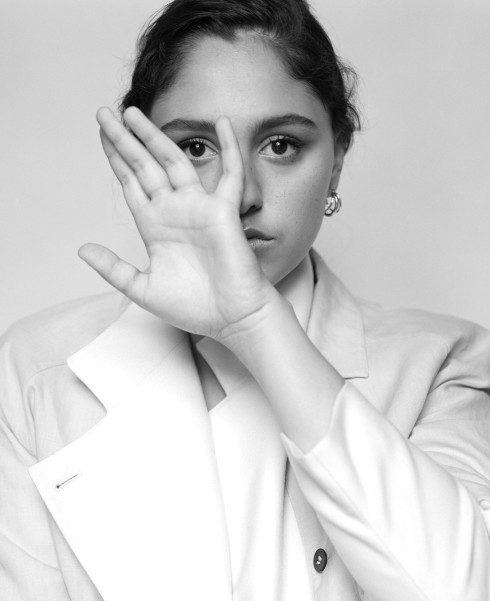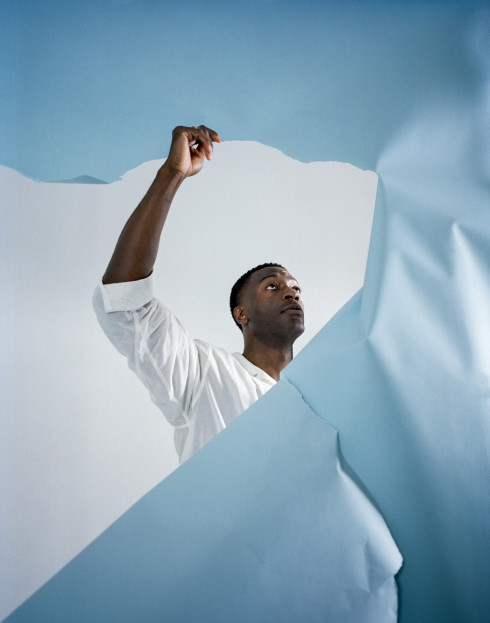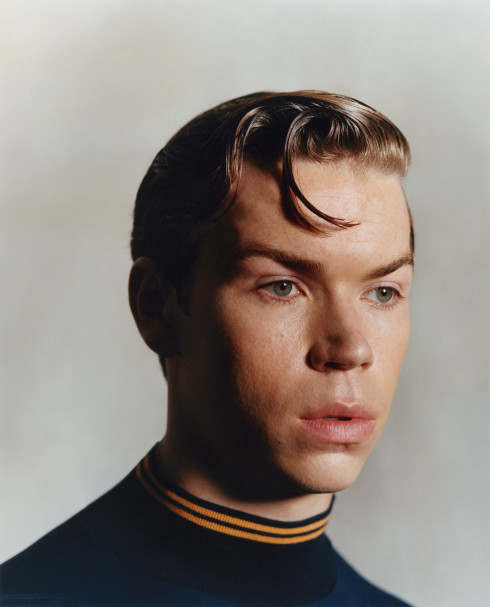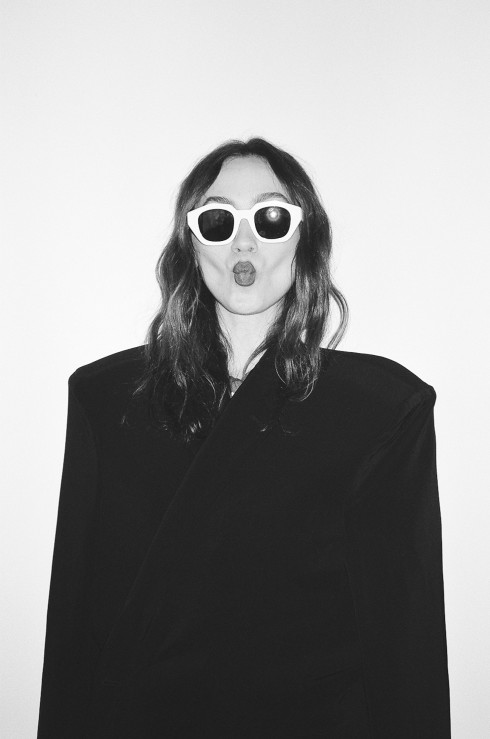
All clothing by Kiko Kostadinov. Tie by Margaret Howell.
- By
- Jonathan Shia
- Photography by
- Paolo Zerbini
Styling by Vanessa Minshull. Grooming by Antonio de Luca. Photographer’s assistants: Luca Trevisani and Camilla Bach. Stylist’s assistant: Flo Armstrong.
BILLY HOWLE IS BRACINGLY HONEST ABOUT EVERY CHARACTER HE PLAYS—AND HIMSELF
Most actors would consider themselves lucky to be appearing in a new film as the love interest of Saoirse Ronan—fresh off her third Oscar nomination at just twenty-four—but when it happens twice in one week, it can only feel like fate. “It might be something in the water,” jokes the British actor Billy Howle, who is now breaking onto American screens with Michael Mayer’s recently-released adaptation of Chekhov’s famed play The Seagull as well as the film version of Ian McEwan’s bestselling novella On Chesil Beach, out this Friday. In both, he demonstrates a lucid intelligence and honesty in tracing the path of a young love that ends in heartbreak.
The son of two teachers, Howle came to performance through dance, having studied tap and ballet as a young child at the village studio. He recalls subjecting his parents and extended family to improvised four-hour one-man plays before making his stage début in a local pantomime as Cinderella’s dog. “I had to wear this ridiculous big dog costume and in the saddest scene, when Cinderella realizes that she’s never going to meet her Prince Charming again, I was at the side of the stage,” he laughs. “Because I was not doing what I was supposed to be doing, during the saddest scene the audience started roaring with laughter and I realized the power—and responsibility—I had in storytelling at the age of seven or eight and how impactful that is on a large number of people sat in a dark room.”
Howle, now twenty-eight, spent his formative years in the youth troupe at playwright Alan Ayckbourn’s Stephen Joseph Theatre in Scarborough before attending the Bristol Old Vic Theatre School to complete his classical education, already with visions of a pathbreaking future. “I had a lot of ideas back then,” he says with a laugh. “There were lots of things that I knew I wanted to do and lots of things I knew I definitely didn’t want to do. I wanted a very formal classical training because I wanted to bend the rules later and my belief that’s been imbued in me by my parents is that you can only really bend the rules if you know them. At the time I was probably a bit more radical like, Yeah I’m going to change the world. I’ve hopefully matured since then, but my intention is still to experiment, to extemporize, to improvise.”
In this regard, he is similar to his Konstantin in The Seagull, a young writer whose purposefully avant-garde play—starring Ronan’s Nina—is mercilessly mocked by his mother, a famous theater actress played by Annette Bening. “That was immediately relatable for me, the idea of a struggling artist,” Howle admits. “There’s a petulance and an impatience touching on paranoia and suspicion and jealousy. I identified those things first.”
In The Seagull, adapted here by the Tony-winning playwright Stephen Karam, Chekhov refuses to spare any of his characters, from the pompous middlebrow author Trigorin to the besotted alcoholic Masha. In Howle’s bracing interpretation, that frankness is exactly what keeps the play relevant today. “A sign of any good writer is if someone is able to encapsulate a universal truth, something that is not ephemeral but will have existed as long as mankind has existed,” he argues. “He’s talking about things that we all relate to but sometimes definitely don’t want to. It’s parts of ourselves that we usually dislike the most and that’s what makes it funny because we’re looking at ourselves and going, Oh look how disgusting human beings are to one another, and that’s hilarious. Or in my opinion, it is anyway.”
Though it was released just last Friday, The Seagull was originally filmed in 2015 and served as Howle’s first experience on a movie set after years of television and stage work, including a breakout role in 2014’s celebrated teen crime drama Glue and a sold-out production of Ibsen’s Ghosts that traveled from London to New York’s Brooklyn Academy of Music. More recently, he has appeared in the BBC’s popular adaptation of Agatha Christie’s The Witness for the Prosecution and as a younger version of Jim Broadbent’s character in the film The Sense of an Ending, but he says he finds himself continually drawn back to the stage, his first home. “Sometimes it’s an endurance test, like who wants to have a morphine-addicted mother for four hours eight times a week?” he asks, referring to his run in O’Neill’s classic play Long Day’s Journey Into Night as the son of Lesley Manville and Jeremy Irons. “You really have to have some patience, but you also have to really care about what you’re doing, so theater for me is a real reminder of why I love what I do and why I’m passionate about storytelling.”
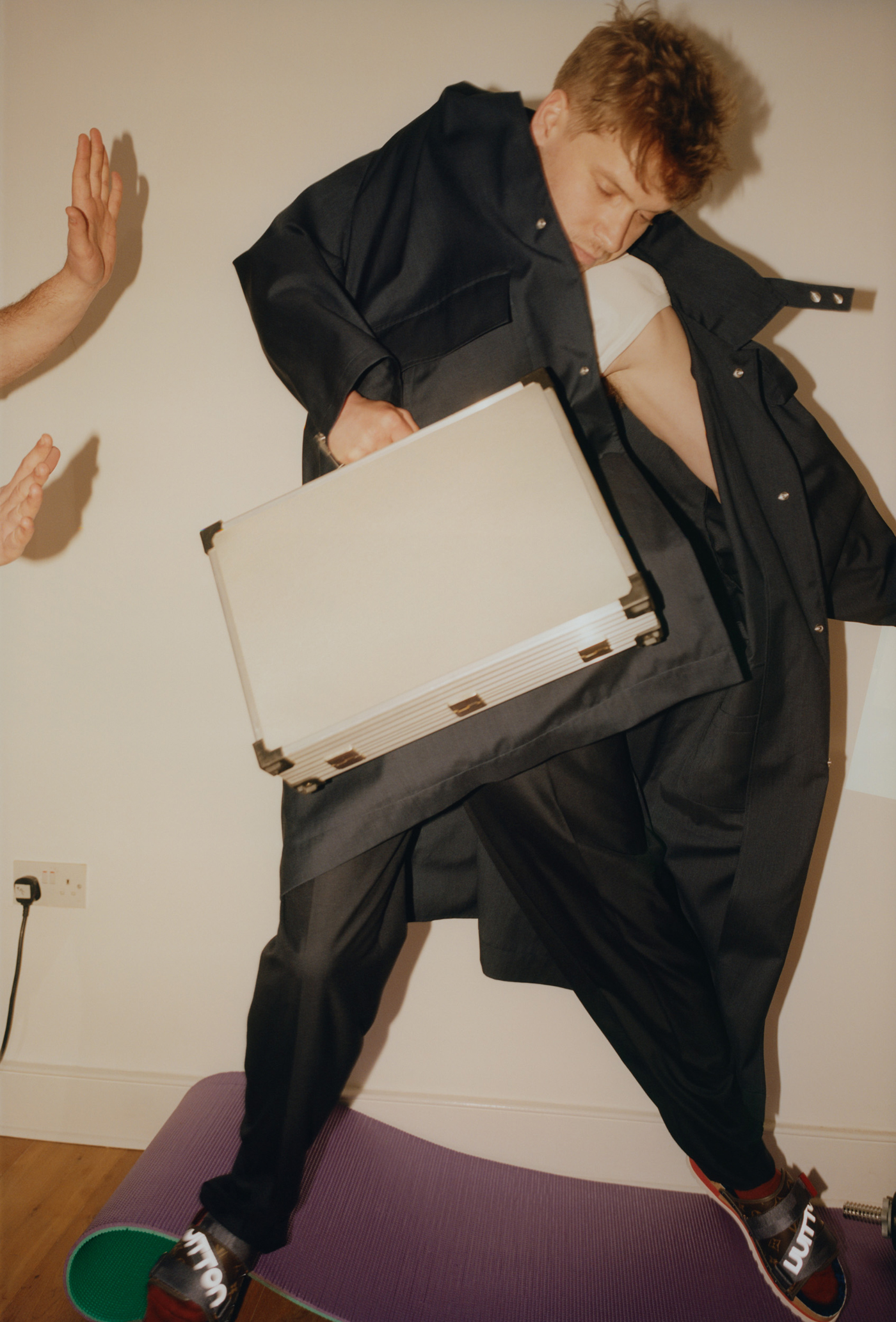
That passion is startlingly vivid in On Chesil Beach, which recounts the honeymoon weekend of a young couple, played by a reunited Howle and Ronan, and the evolution of their relationship in flashback. Edward and Florence meet as university students and quickly fall in love as the film cuts back and forth between the tense present and their contented past, adding a heightened sense of nostalgia as the newlyweds struggle in their new roles as husband and wife. The two leads exhibit a rare chemistry, which Howle credits partly to their shared history together and partly to having filmed in chronological order, which allowed them to grow into the partnership along with their characters. “When it came to the honeymoon sequence, all of that stuff clicked and it was genuinely awkward,” he explains, “because in order to convey that level of awkwardness and that uncomfortable situation it required a lot of trust between us and an implicit understanding of each other’s needs professionally.”
As in The Seagull, On Chesil Beach offers a brutally unvarnished reflection of human relationships as Edward and Florence’s seemingly idyllic love curdles over the course of a single afternoon. Edward lashes out at Florence after an embarrassing moment, displaying a fury unlike any emotion he’s expressed before, and Howle says it is exactly Edward’s flaws that attracted him. “I felt like there are certain elements to Edward’s character and his behavior that are really important to talk about,” he explains. “One of those is this toxic idea of masculinity and aggression and impatience and lack of compassion and not speaking about your emotions with the people closest to you. I was fascinated by that and I was like, Ian has encapsulated all of those things that I often think about myself anyway in this role, and I was interested in conveying those things and understanding them as well. I actually learned a lot about myself doing that.”
That unsparing introspection seems to be a common thread for Howle, who relishes tackling roles that reveal the complexity of every individual, even their darker sides. From Konstantin’s jealousy and Edward’s rage to the cruelty exhibited by his Tony in The Sense of an Ending, he is unafraid to delve into some of humanity’s more unappealing qualities, even at the risk of discovering them closer to home. “My first port of call is to recognize them in yourself,” he offers. “A lot of people actually believe that they don’t have any unlikable attributes and we all know that not to be true. Everyone is flawed. We have flaws and recognizing them in ourselves is very difficult for us to do because we’re always trying to perfect them and I think that’s incredibly unhealthy. I know myself to have a temper, for instance, but my temper is there for a reason. We have this wide range of emotions because they all have a purpose and if they could be channeled then sometimes really good things can come out of what we consider to be negative emotions.”
The Seagull is out now. On Chesil Beach is out Friday.
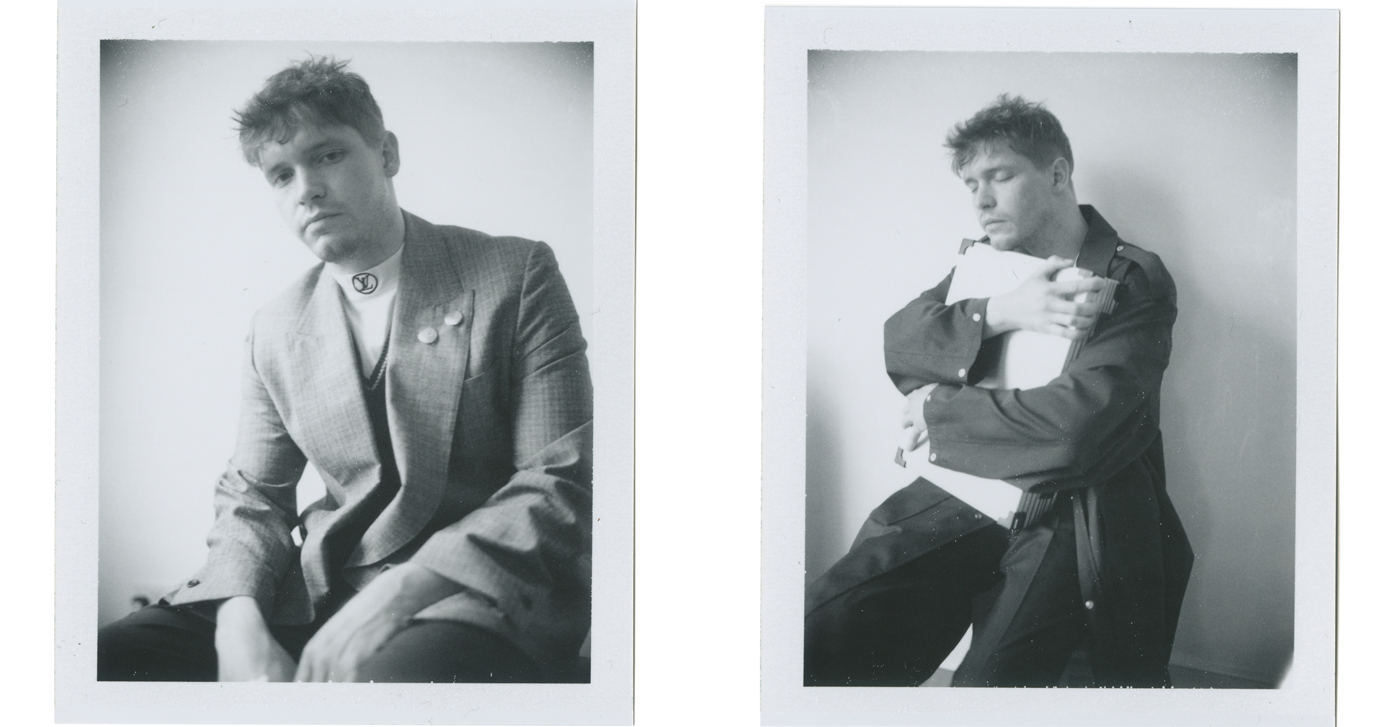
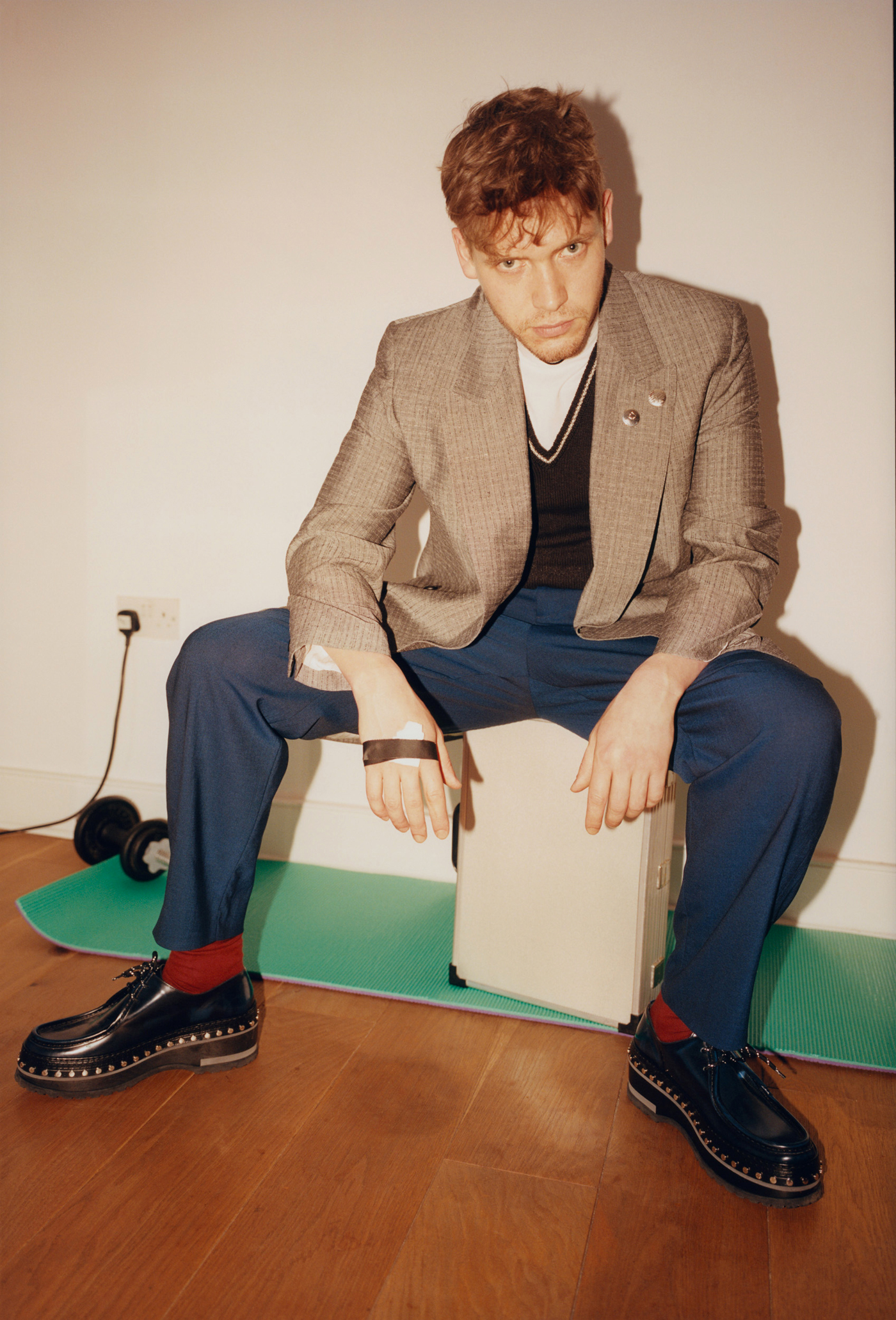
- By
- Jonathan Shia
- Photography by
- Paolo Zerbini
Styling by Vanessa Minshull. Grooming by Antonio de Luca. Photographer’s assistants: Luca Trevisani and Camilla Bach. Stylist’s assistant: Flo Armstrong.
